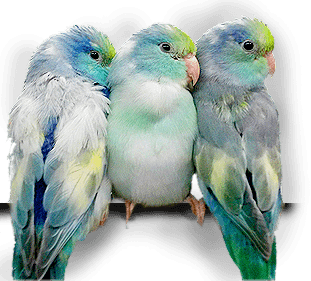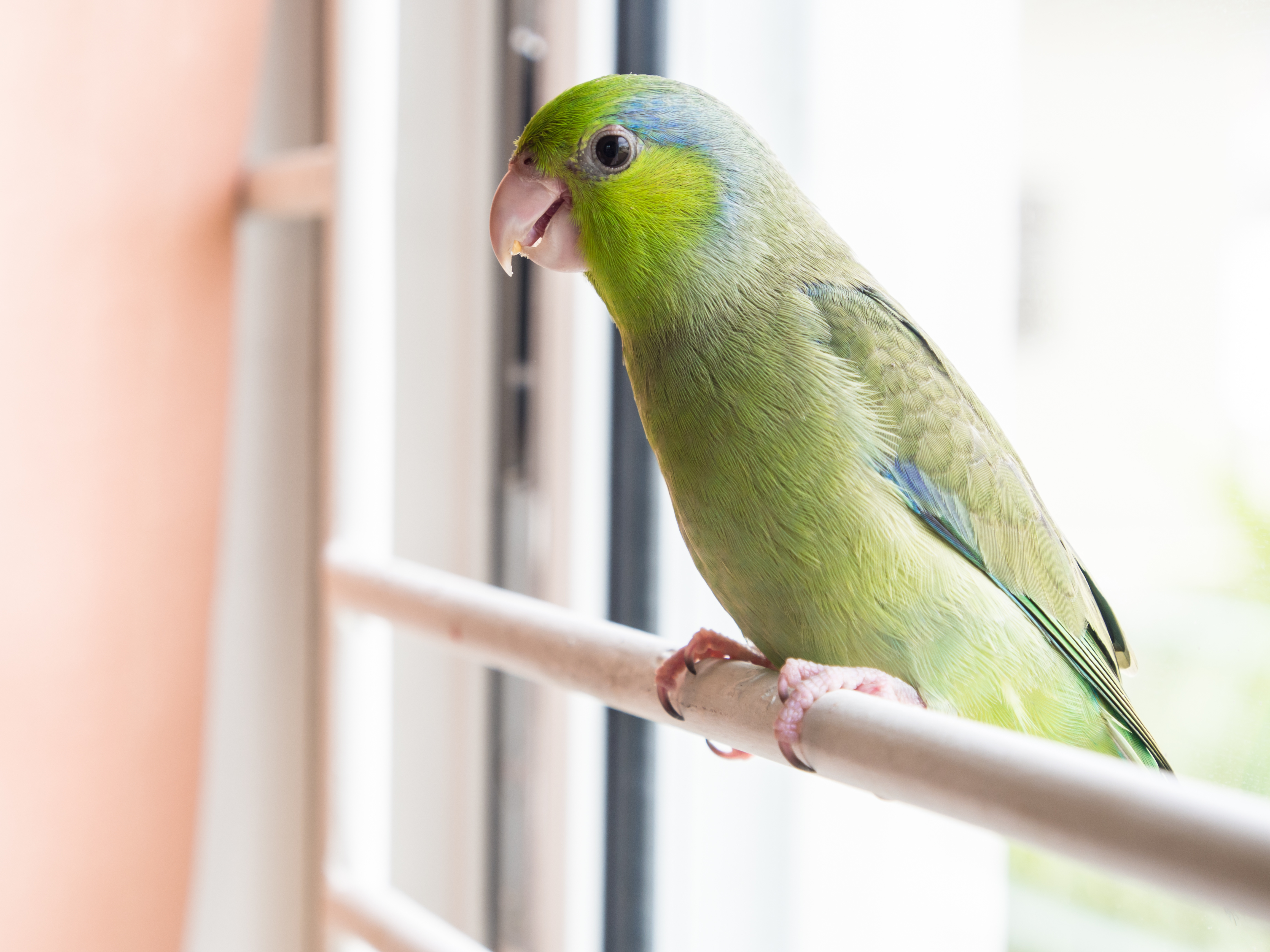Did you know approximately 3% of households have an average of 2 pet birds apiece? That amounts to 3,671,000 bird-owning households in total.
And each year, bird owners spend $33 on vet visits, with about $14 per bird. While dog owners spend an estimated $378 and cat owners $191 per year.
This makes pet birds both popular and relatively low cost.
Let’s take a look at 5 reasons parrotlets are the best type of pet bird.
Why Parrotlets Are the Best Types of Pet Birds
Parrotlets are the tiniest species of parrot in the world.
Whether you’re interested in Torqoise, Pastel or American parrotlets, you won’t be disappointed with your choice. Each type of parrotlet brings with it a different fun personality and way of interacting with you that’s all its own.
1. They Are Little Entertainers With Huge Personalities
Parrotlets are friendly pet birds with larger-than-life personalities.
Curious and courageous, your parrotlet will surprise you with its daring. They’ll venture out into uncharted territory. And they may also try to annoy your dog. Or they’ll find a cozy spot near the ceiling to perch and merely observe the going-ons below.
Bird Toys
Give your bird a toy and you may be entertained for hours. As this particular bird tends to get very creative playing with toys. And sometimes your curtains!
They’ll never cease to amaze you as they explore and test out the objects in their surroundings. They’ll wiggle their tiny bodies through crevices and may taste anything they contact. Anything may become a toy to them.
Safety Concerns
This is why it’s important to keep mouse traps, sprays, air fresheners and other potentially hazardous items or substances out of reach of your parrotlet.
Parrotlets comical, fun and entertaining. But remember that ceiling fans should always be turned off. And pet cats or dogs may not always be safe around your parrotlet. Be sure always supervise your pets’ interaction with each other.
2. They Enjoy Giving and Receiving Affection
Parrotlets are most assuredly the bringers of immense affection. But they also require the reciprocation of this affection.
A Lonely Parrotlet Is a Mischievous Parrotlet
Parrotlets may get lonely and up to mischief if they’re ignored or left alone for too long. They generally desire more stimulation than just seeing you a few minutes in the morning and a couple of hours in the evening.
Working A Full-time Job
If you do work a 9 to 5 job, be sure to leave stimulating music and a light on for your pet bird when you leave. And shower them with affection when you return home.
Better yet, take your pet bird to work with you if you can. Just be mindful of the temperatures they’re exposed to on the ride to work. Basically, if the air is comfortable to you in a T-shirt and pants, it’ll be sufficient for your pet bird.
When you get a pet bird, you’ll want to give them just as much love and attention as they give you.
3. Bigger Doesn’t Always Mean Better
With only 4 to 6 inches from head to tail feather, the parrotlet doesn’t demand a lot of room. A medium-sized cage and the occasional venture out into your room is more than enough to keep them content.
Weight
Weighing in at about 1 to 2 ounces, these birds add almost no weight when they’re hitching a ride on top of your head, shoulder or arm.
Life Expectancy
These tiny birds are the types of pet birds that add a lot to the atmosphere of a home. And they also have a life expectancy between 20 and 40 years. So you’ll have plenty of time to bond with them and enjoy them through the decades.
4. They’re One of the Quietest Types of Pet Birds And Low Maintenance
Parrotlets tend to be quieter when compared with their parrot peers. This trait makes them perfect for a space where noise levels can be an issue such as:
- An apartment with thin walls
- A condo with close neighbors
- A shared space with a light sleeper
Parrotlets are also a great alternative when cats and dogs aren’t allowed due to allergies or apartment complex policies.
Low Commitment
Parrotlets don’t have to be walked or entertained like most dogs and some cats do.
They can be contained to their cages. But they do thrive on the occasional out of cage experience. They may enjoy simply walking or flying around your room from time to time.
It’s important to keep your bird somewhat contained and always supervised. For instance, you wouldn’t want an unsuspecting family member to accidentally open the front door when your pet bird is perched on the furniture next to the door.
Also, parrotlets don’t require regular veterinary check-ups as many cats and dogs do. And they tend to remain fairly healthy most of the time.
Low Cost
Pet bird food can last for months and months, depending on the bag size you purchase. And parrotlets will fare just fine on regular tap water. But be sure to change their water out each day as bacteria can begin to grow if left stagnant, causing illness.
Low Maintenance and Quick and Easy Clean Up
A parrotlet can bathe itself in any source of tap water. And its cage requires only a few biodegradable newspapers or shredded papers.
The occasional full soap and water cleaning may be necessary based on your individual pet bird’s needs.
5. They’re Excellent Companions
Parrotlets are awesome confidantes. They’ll listen to your stories. And comfort you on your bad days.
These pet birds enjoy riding on your shoulder and some even come when called. Especially if the call is from their “pet human’s” voice.
Parrotlets bring so much joy to the lives of their owners. This is why parrotlets are the best types of pet birds available.
The Best Types of Pet Birds
Whether you’re looking for a loyal friend, endless amusement or the deep affection only a pet can provide, you can’t go wrong with parrotlets.
For more information on how you can welcome the best types of pet birds into your home, check us out today.


